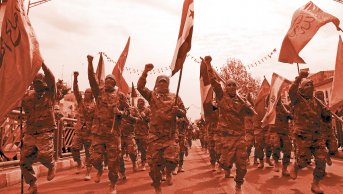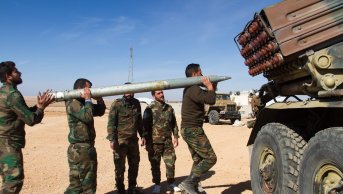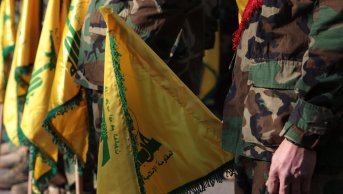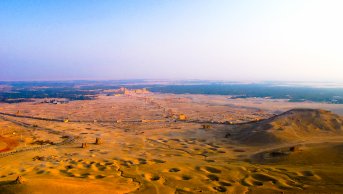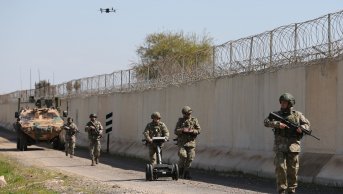Three Fronts of Iranian-Backed Militia in Deir ez-Zor
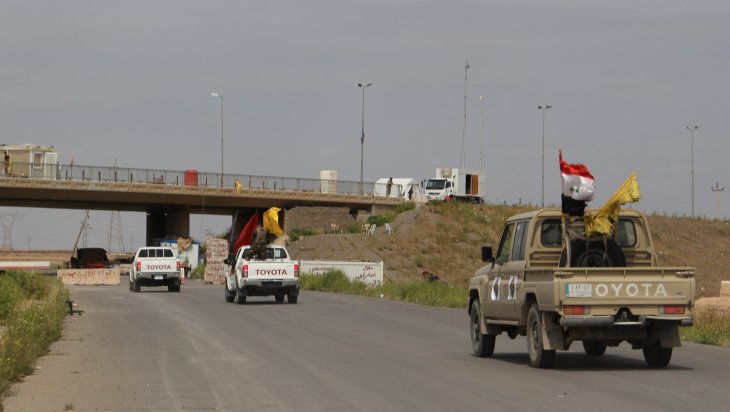
Deir ez-Zor, one of the regions where Iranian-backed militia forces are heavily deployed in Syria, is of vital importance for the functioning of the line Iran has established through Iraq-Syria-Lebanon due to its location. While Iranian-backed militia forces are trying to balance Russia in Syria on this line, they also act as a barrier against the YPG/SDF presence in eastern Syria. Although it seems interesting that Iran has increased its influence in Deir ez-Zor, where the majority of population is Sunni Arab, this situation has historical and conjunctural reasons.
The fact that the Baggara tribe, one of the largest tribes of Deir ez-Zor, defines itself as “Ahl al-Bayt” (Family of the Prophet Muhammad), has set the stage for Iran to spread its Shiite faith by acting on the concept of Ahl al-Bayt in its efforts to increase influence in the region. These efforts of Iran have not had a noticeable effect on the sectarian structure of the region in numerical terms, but have led to sectarian changes based on politics, albeit in a limited number, and enabled Iran to get to know the region closely. The historical background of this process can be traced back to the early 1980s. Al-Murtada, a foundation established in 1981 in line with the efforts of Hafez Assad's brother Jamil al-Assad to teach the Arab Alawite youth the Shiite faith and the efforts towards their Shiaization, opened a branch in Deir ez-Zor.[1] Umar al-Hammadi, a sergeant who served in the regime's Army and who left Sunnism for Shiism in 1979, has come to the fore in Iran's activities in the region. Al-Hammadi's cousin Yassin al-Mayouf, who was strengthened with the support of Iran, became the head of the Deir ez-Zor branch of Al-Murtada. Al-Murtada was closed down in 1983 by the order of Hafez al-Assad, particularly after the reactions of Arab Alawites.[2] Nevertheless, Iran continued its activities in the region through Mayouf and those around him. In 1992, Husseiniyas were established in the villages of Zaghir, Kasra and Asava, where the Baggara tribe was active, while the Shia Adhan was recited for the first time in the town of Hatlah. Again, during the same period, a significant amount of money was paid to those who converted to Shiism in the region, and social aids, especially marriage assistance, were among the methods of creating ground for Iran. These efforts did not lead to a major change in sectarian structure, but offered Iran the opportunity to mobilize in terms of militarization efforts in eastern Syria during the civil war.
The first result of Iran's efforts was the militia force Liwa al-Baqir (al-Baqir Brigade), formed early in the Civil War, containing militants from the Baggara tribe. At the beginning of the civil war, some of the Shiites of the Baggara tribe left the region due to the fact that the regime lost control of important parts of Deir ez-Zor.[3] While some of these elements participated in the conflicts as a militia force in Aleppo under Liwa al-Baqir, some of them settled in Damascus.[4] Iran added military power to its political power in Syria, first with Hezbollah's involvement in the war, and then with the participation of several Shiite militia groups, especially Iraqi groups, in the Syrian war. Iranian-backed militias, which took part in the conflicts in western Syria, especially in Aleppo, Damascus and Daraa fronts, were mostly deployed on a line from north to south in Deir ez-Zor. Iran, while bringing military forces from outside in Syria, deepened its ties through local militia forces in the meantime. Tehran, which controlled a large number of Syrian militias through Local Defense Forces (LDF) it formed, preferred to draw the local forces to its side by taking Nawaf al-Bashir, the leader of the Baggara tribe in Deir ez-Zor, under its wing.
Three-Front Defence
As of 2021, Iranian-backed militias deployed on the line extending from Tabni in the north to Albu Kamal in the south in Deir ez-Zor, are also active in the regions opening to the desert in the western countryside of Deir ez-Zor. Some of the militia forces in the region under the control and coordination of the Iran's Islamic Revolutionary Guards include: Liwa al-Quds, the Badr Brigades, Hezbollah, Kata'ib Sayyid al-Shuhada, Harakat al-Abdal, Liwa'a Zulfiqar, Fatemiyoun Brigade, Zainebiyoun Brigade, Harakat Hezbollah al-Nujaba, Liwa al-Baqir, Brigade 313, Liwau’t-Tufuf and Kata'ib al-Imam Ali. The regions where these Iranian-backed militias are active are Tabni, Al-Ashara, Al-Quriyah, Mayadin, Al-Muhassan, Deir ez-Zor, Maarrat, Hatlah, al-Salhiya, Bokros, Al-Jalaa, and Sabikhan.
These groups are actively involved in the regime's Deir ez-Zor lines of defense. These groups were the target of at least 150 ISIS attacks between January 2019 and December 2020, and at least 14 ISIS attacks as of the first 40 days of 2021, according to Waters' data.[5] Shoula, Kebajib, Tabni, Tayem oil field, Mayadin, Albu Kamal and T2 petrol station were the regions with the highest number of ISIS attacks. The resistance of the Iranian-backed militias against ISIS activities, which have suffered significant losses in these attacks, directly affects the health of the Iraq-Syria logistics line.
The other front in Deir ez-Zor is the US-backed YPG/SDF for Iranian-backed militias. The "umbrella organization", SDF, which is under the leadership and command of the YPG and includes some local groups, is based to the east of the Euphrates. There is a tense atmosphere that can turn into conflict at any time between the SDF, which still dominates the region with the intense military and diplomatic support of the USA, and the Iranian-backed militias and other Assad regime elements. Regime sources accuse the YPG of harassing regime positions in Deir ez-Zor and detaining pro-regime figures. On the other hand, SDF sources claim that the regime and Iranian forces are responsible for various assassinations in the region and that they aim to confront the local people and the SDF with these assassinations.
For Iranian-backed militias, the third front in Deir ez-Zor and its vicinity is Israeli attacks. It is possible to talk about only a one-sided and asymmetrical conflict since Iranian-backed militias are not able to respond directly on this front, unlike on the fronts against SDF and ISIS. Israel, which targeted Syria with airstrikes at least 20 times in 2020, hit Deir ez-Zor in two of these attacks. Continuing its attacks in the new year, Israel hit Iranian-backed militia positions and militia arsenals in Deir ez-Zor on January 13. According to local sources, heavy airstrikes took place on Mayadin, Albu Kamal, Al-Quriyah, Muhassan regions, and the militia-owned Imam Ali military base. The fact that Israel, which is constantly targeting Iranian and pro-Iranian elements, especially the capital Damascus, in the west of Syria, directs its route to eastern Syria, shows the importance of Deir ez-Zor region for Iran from the eyes of Tel Aviv.
In this three-front equation, Iranian-backed militias appear to have the upper hand in terms of human resources, with their local connections in Deir ez-Zor and the possibility of deploying new militias from Iraq across the border at any time. Shiite militias can bring additional forces to the region, if needed, both from inside Syria and from Iraq. Despite this, Shiite militias are both technically and geographically vulnerable to possible U.S. and Israeli airstrikes. This situation leaves Iranian-backed militias fragile on both fronts. On the front against ISIS, the fact that ISIS cells are intensifying their attacks every day in the region and inflicting heavy casualties on Iranian-backed militias, especially in the rural areas, shows that Iranian-backed militias have a weakness in terms of strategy and intelligence. Given these weaknesses and vulnerability to powerful enemies, it seems that the Deir ez-Zor region will continue to incur significant costs for the Iranian-backed militias.
[1] https://deirezzor24.net/wp-content/uploads/2020/08/Shiism-in-Deir-Ezzor-The-stages-1.pdf , Access Date: February 13, 2021.
[2] https://syriauntold.com/2017/03/09/do-alawis-want-to-become-shia/ , Access Date: February 13, 2021..
[3] https://www.cnas.org/publications/reports/deir-azzour-tribal-mapping-project , Access Date: February 14, 2021.
[4] https://twitter.com/tobiaschneider/status/817148099353255936 , Access Date: February 15, 2021.
[5] https://www.counterextremism.com/blog/isis-redux-central-syria-insurgency-december-2020 , Access Date: February 14, 2021.

